Art classes for preschoolers often focus on coloring inside the lines, but open-ended art activities for preschoolers can help them learn about problem solving, experimentation, exploration, self-motivation and so much more.
Imagine this:
You just spent your morning finding a great project, scouring the cupboards for supplies, getting everything set up, and putting together an art lesson that’s sure to engage your child for the next half hour…. Only for them to spend 5 minutes at the art table before walking away 🤦♀️
Does this sound familiar?
It can feel so disappointing and maybe even discourages you from wanting to try again. Instead of throwing in the towel, try an open-ended art activity that encourages more time spent making, inventing, and exploring.
Enter stage right: open-ended art activities for preschoolers!
What are open-ended art activities for preschoolers?
Open-ended projects naturally encourage children to spend more time experimenting, engaging, and exploring without the pressure of creating a picture-perfect craft.
When there’s no specific end goal to achieve, they’ll push their thinking and expand on their ideas.
With open ended art, the end result is unique to the child, there are countless outcomes, each creation is a masterpiece, young children are engaged with problem-solving, creativity will bloom.
Not only that, you spend less time setting it up while your child is naturally engaged and self-motivated to create.
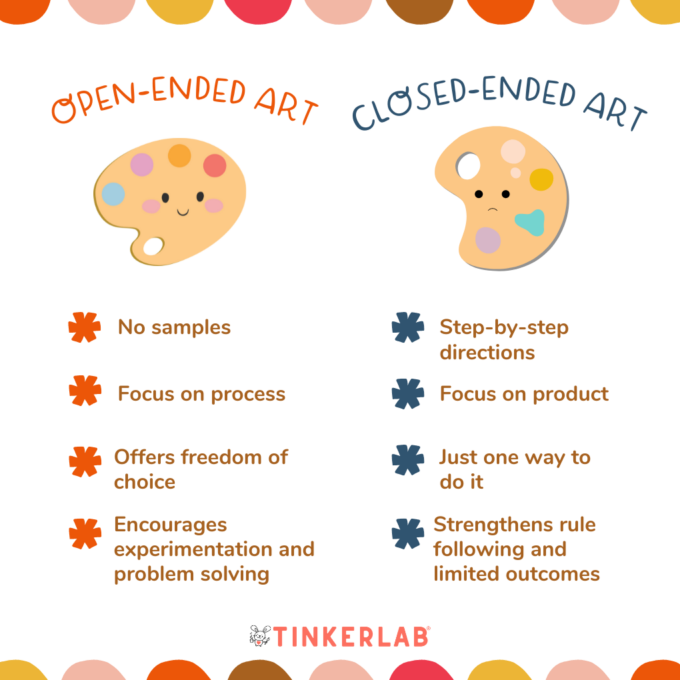
Why it is important to provide children with open-ended art experiences that focus on the process vs the product?
Open-ended art experiences encourage iterations. By encouraging children to make multiple versions, we empower them to create more freely and spend more time exploring different ways to use the same materials.
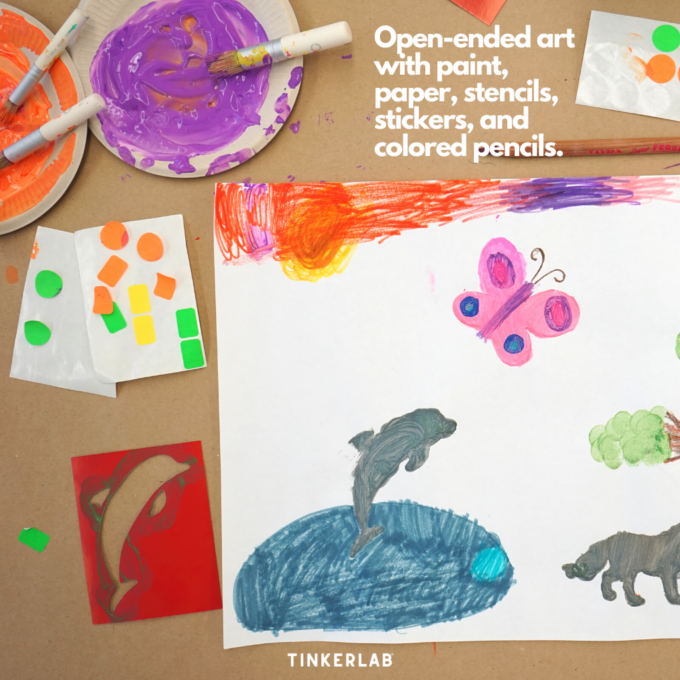
What is an example of an open-ended art activity for preschoolers?
There are hundreds of ways to set up open ended art activities for preschoolers. I’ll share eight ideas here so you can start giving it a try today.
- Offer pencils and paper with an invitation to draw. Download one of our monthly drawing challenges for word-of-the-day prompts.
- Place yarn, glue, scissors and cardboard on the table and invite your child to create…anything they like.
- Cut a piece of paper into 4 sheets. Give your child a prompt such as “flower” or “rocket” and invite them to create something different on each sheet. For a little more guidance, try the four-section collage heart activity.
- Take a clipboard with paper plus crayons or markers outside. Invite your child to draw what they see.
- Set up loose parts like buttons, fabric pieces, pipe cleaners, and beads, along with clay or playdough for open ended sculpture and building.
- Offer chalk, watercolor paper, a jar of water and brushes.
- Set up oil pastels, a small bowl of oil, watercolor paper, and a paint brush. The oil pastels can be blended with oil, a fun experiment and sensory exploration. See how we set this up in this Instagram post.
- Place leaves, glue, and brushes for Leaf and Glue Process Art.
Are there instructions with open-ended art activities for preschoolers?
With open ended art there are usually few instructions. A good way to introduce the art lesson is with a question or prompt like “I wonder what you can create with (name of the art materials)?”
Look for our “Wonder Wednesday” prompts on the TinkerLab Instagram page for some fun ideas, and follow us each week for new ideas.
What are open-ended materials?
Open-ended art projects can be set up with a variety of materials. The trick is limiting options so kids don’t get overwhelmed.
I like to think of setting up 2-D and 3-D projects when I consider a new open-ended art activity.
Set up and open-ended 2-D projects
First choose a tools or two, such as crayons, tempera paint sticks, markers, pencils, or scissors.
Then choose some sort of substrate such as tissue paper, watercolor paper, cardboard, or coffee filters.
Set this up on a covered surface to minimize the mess.
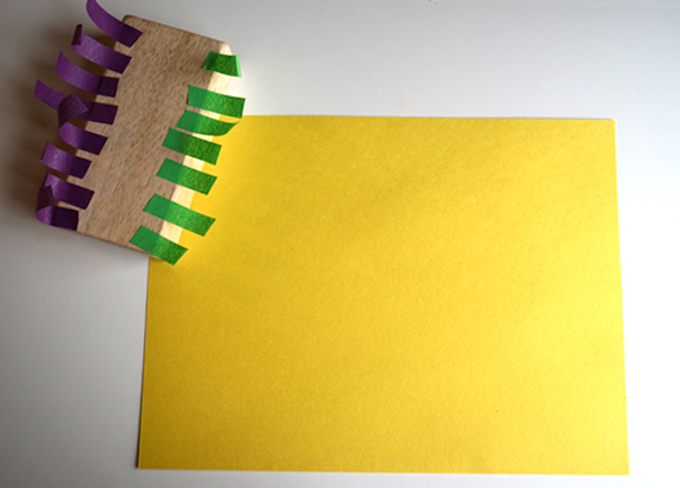
Here’s an example of a 2-D project using tape as the tool and paper as the substrate: Invitation to Create with Tape and Paper.
Set up and open-ended 3-D projects
Choose your 3-D material such as playdough, clay, cardboard tubes, wood scrap, or cereal box.
Then add some treasures like feathers or pom poms, plus glue or tape. You could also offer tools like paint and brushes.
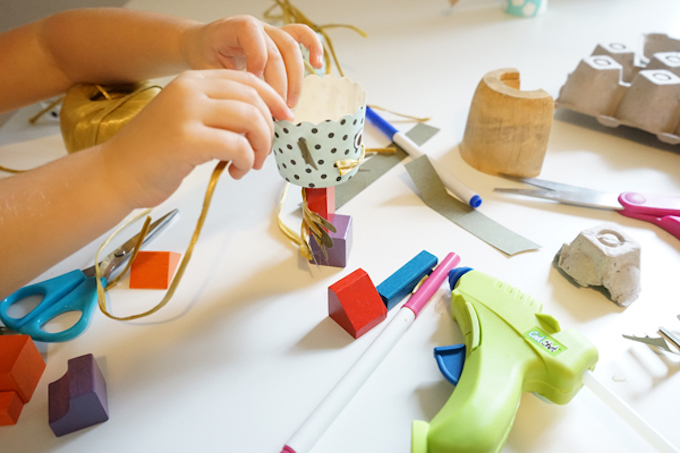
Here’s an example with materials found in the recycling bin plus a low-heat glue gun: Found Object Junk Critters.
This is all about experimentation, both for you and your maker, so have fun exploring different material options.
How do you plan an open ended activity for preschoolers?
Focus on play: Approach art and maker time from a play-based mindset. When children are having fun, trying new things, and exploring their materials, they’ll want to stay at the table longer.
Follow their Curiosities: Children are naturally curious creatures, so finding activities that inspire their curiosity instills the intrinsic motivation that keeps that making and creating for hours. Not sure what they’re curious about? Spend a few days jotting down what you notice them noticing. Maybe they’re really into bugs, rocks, or the ocean. Then, find ideas based on those interests.
Finally, remember that sometimes kids just aren’t that into making, and that’s okay. It’s important that they engage in art and making when they want to, instead of feeling forced into it. If you can, leave the supplies out and see if they come back to it later.


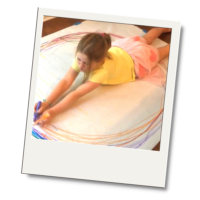
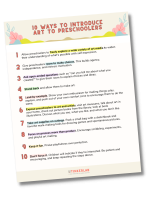
[…] Open-ended Art Activities for Preschoolers: How-to & Benefits! […]
[…] Open-ended Art Activities for Preschoolers: How to and Benefits […]